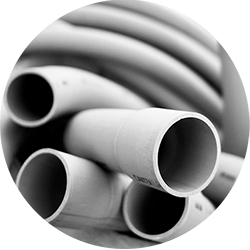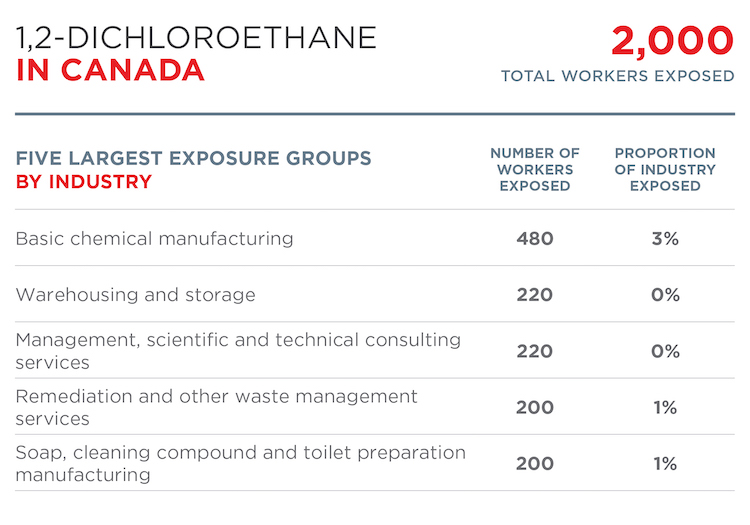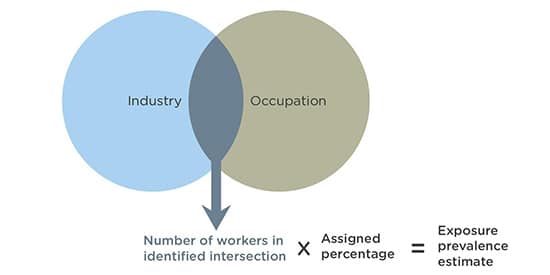
1-Bromopropane
1-Bromopropane Profile

INDUSTRIAL CHEMICALS – POSSIBLE CARCINOGEN (IARC 2B)
Contents
1-Bromopropane Profile
General Information
1-Bromopropane is an organic solvent that is a colourless or pale yellow liquid with a strong, sweet odour.[1] It is used as a solvent in many industries, and in the past it has also been used as a chemical intermediate to produce other substances, including pesticides and fragrances.[2] 1-Bromopropane may also be referred to as propyl bromide or n-propyl bromide. There are numerous other synonyms and product names; see the Hazardous Substances Data Bank for more information.[3]
In 2016, 1-bromopropane was classified by the International Agency for Research on Cancer as possibly carcinogenic to humans (Group 2B).[1] This decision was based on sufficient evidence of the carcinogenicity of 1-bromopropane in experimental animal studies.[1] Other health impacts associated with 1-bromopropane exposure include neurological deficits with low-level exposure (e.g. decreased vibration sensation, burning or prickling sensation in the extremities), neurotoxic effects with higher level exposure (e.g. incoordination, inability to walk, and nerve damage), and nose and throat irritation. [2,4] Adverse reproductive effects are also suspected.[2]
Regulations and Guidelines
Occupational exposure limits (OEL)[5,6,7,8,9,10,11,12,13,14,15,16,17,18,19]
| Canadian Jurisdictions | OEL (ppm) |
| Canada Labour Code | 0.1 |
| AB, NB | 10 |
| BC | 0.1, r |
| MB, NL, NS, NU, ON PE | 0.1 |
| NT, SK | 10 [TWA] 20 [stel] |
| QC, YT | N/A |
| Other Jurisdictions | OEL (ppm) |
| ACGIH 2020 TLV | 0.1 |
ppm = parts per million
r = reproductive toxin
N/A = not available
ACGIH = American Conference of Governmental Industrial Hygienists
TLV = threshold limit value
Canadian environmental guidelines and standards
1-Bromopropane is listed on Health Canada’s Domestic Substances List as a substance requiring additional consideration.[20] It was not included in other Canadian government guidelines, standards, or chemical listings reviewed.
Main Uses
1-Bromopropane is used as a solvent in the spray adhesive industry to manufacture polyurethane foam cushions, as a vapour degreasing agent, and as a cleaning solvent for metals, plastics, optical and electronic components.[1,2] It has also been used as a dry cleaning solvent, but its use for this purpose has been declining, at least in the United States.[21] In the past, 1-bromopropane has also used as a chemical intermediate to produce pesticides, fragrances, flavours, and pharmaceuticals.[2]
Canadian Production and Trade
Canadian production and trade data were not identified.
In the United States, production of 1-bromopropane has increased over the last 10 years because it is a common substitute for other substances that are ozone-depleting (e.g. hydrochlorofluorocarbons) or and more harmful to health (e.g. tetrachloroethylene).[2] In 2012, 1-bromopropane was reported to be manufactured by at least 21 companies globally, including at least 1 in the United States.[22]
Environmental Exposures Overview
Inhalation exposure may occur among the general population living close to facilities that use 1-bromopropane, as it may be released during aerosol applications (e.g. in degreasing operations).[2,23,24]
Little data on ambient air levels of 1-bromopropane exist. In 2014, 1-bromopropane was detected in one of the US EPA’s monitoring locations, with levels of 0.14-0.16 ppb.[25] 1-Bromopropane is not reportable to the National Pollutant Release Inventory.[26]
A search of the Consumer Product Information Database yielded the following results, which can help us understand the potential for exposure to 1-bromopropane in Canada:
| Consumer Product Information Database 2021[27] | ||
|---|---|---|
| Search Term | # Products | Product Type |
| ‘1-bromopropane’ | 2 | Floor conditioner (2) |
Occupational Exposures Overview
Workers are primarily exposed through inhalation and dermal contact.
Aerosol applications of 1-bromopropane lead to higher dermal and inhalation exposures among workers. Exposure to 1-bromopropane is highest when it is used as a spray adhesive, but other applications may also lead to exposure (e.g. during production, degreasing operations, adhesives manufacturing, and dry cleaning).[2,23,28,29]
US workplace monitoring studies have found that the air concentration of 1-bromopropane may be considerable. For example, in a furniture foam cushion manufacturing site, workers who were responsible for the spraying adhesives were exposed to time weighted averages of 92 to 108 ppm, while other workers within the industry (responsible for non-spraying tasks such as stuffing pillows, operating sewing machines, etc.) were exposed to 10.5 to 11 ppm.[29,30] Engineering controls are effective at reducing workers’ exposures; after building spray booth enclosures and improving local and general ventilation, workers’ exposure at one spray adhesive foam cushion plant decreased from 170 ppm (geometric mean, range 60-381 ppm) to 19 ppm (range 1.2-58 ppm).[31]
Sources
Photo: Free Stock photos by Vecteezy
Subscribe to our newsletters
The CAREX Canada team offers two regular newsletters: the biannual e-Bulletin summarizing information on upcoming webinars, new publications, and updates to estimates and tools; and the monthly Carcinogens in the News, a digest of media articles, government reports, and academic literature related to the carcinogens we’ve classified as important for surveillance in Canada. Sign up for one or both of these newsletters below.
CAREX Canada
School of Population and Public Health
University of British Columbia
Vancouver Campus
370A - 2206 East Mall
Vancouver, BC V6T 1Z3
CANADA
As a national organization, our work extends across borders into many Indigenous lands throughout Canada. We gratefully acknowledge that our host institution, the University of British Columbia Point Grey campus, is located on the traditional, ancestral, and unceded territories of the xʷməθkʷəy̓əm (Musqueam) people.








